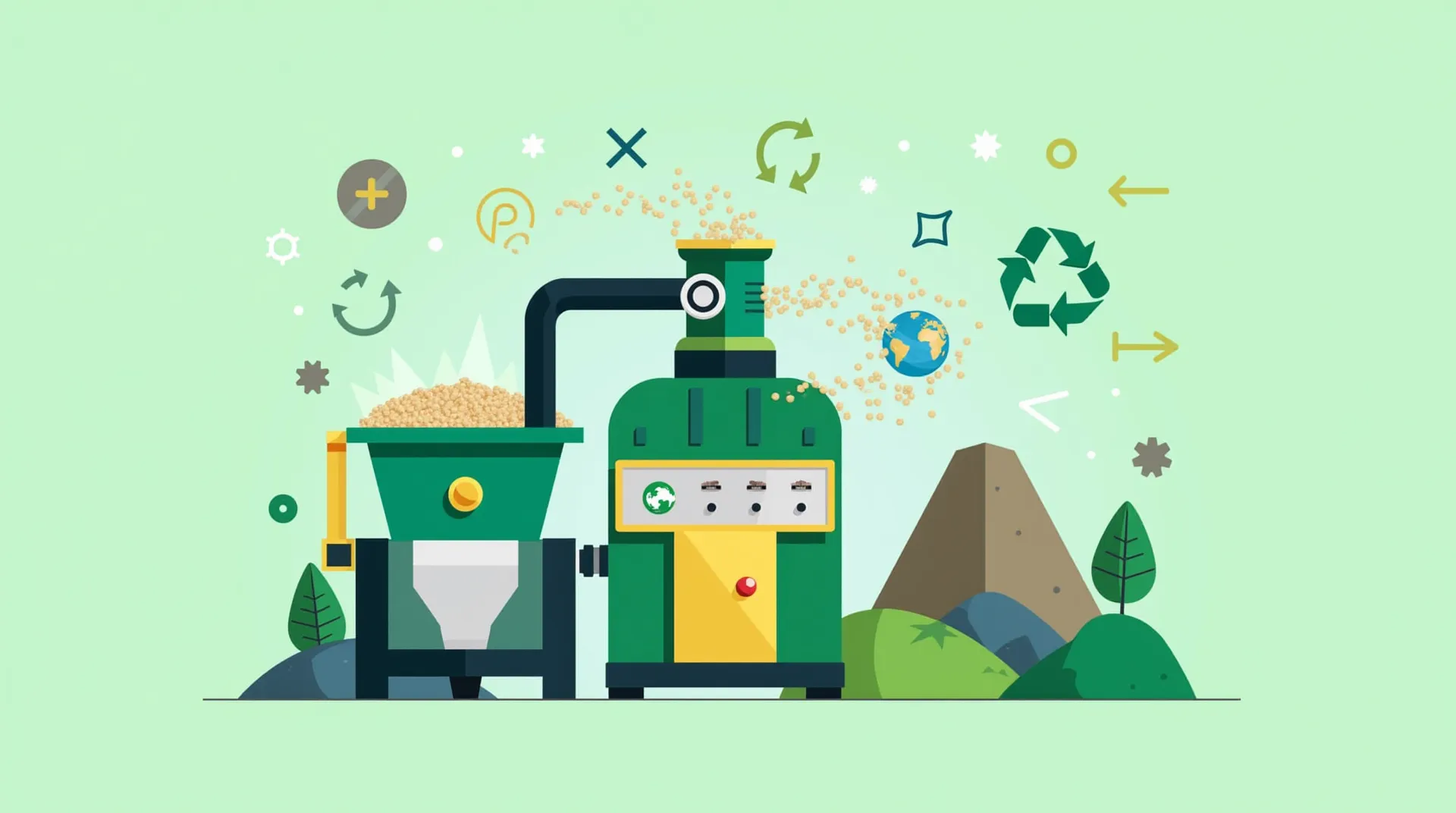Maszyny do granulacji plastiku są niezbędnym elementem kompleksowych systemów recyklingu plastiku, współpracując z innymi specjalistycznymi maszynami. Oto, w jaki sposób integrują się z procesem recyklingu, aby stworzyć kompletne i wydajne rozwiązanie do przekształcania odpadów z tworzyw sztucznych w materiały nadające się do ponownego użycia.
Wstępne przetwarzanie: przygotowanie odpadów z tworzyw sztucznych do granulacji
Zanim rozpocznie się proces granulacji plastiku, odpady z tworzyw sztucznych zazwyczaj przechodzą przez wstępne przetwarzanie z maszynami takimi jak maszyny do rozdrabniania plastiku. Te maszyny odpowiadają za rozdrabnianie dużych i nieporęcznych plastikowych przedmiotów na mniejsze, łatwiejsze w obsłudze kawałki. Rozdrabnianie materiału przed granulacją służy dwóm celom:
- Zwiększa wydajność granulatora poprzez zmniejszenie obciążenia pracą.
- Chroni ostrza granulatora przed nadmiernym zużyciem, wydłużając żywotność urządzenia.
Rozdrabnianie jest szczególnie przydatne w przypadku dużych elementów z tworzyw sztucznych, takich jak rury, skrzynki i pojemniki, które w przeciwnym razie byłyby zbyt duże do bezpośredniej granulacji.
Granulacja: rozbijanie odpadów plastikowych na przemiały
Sercem systemu recyklingu jest maszyna do granulacji plastiku. Znane również jako kruszarki plastiku, maszyny te dodatkowo rozdrabniają rozdrobniony plastik na mniejsze, bardziej jednorodne płatki lub przemiały. Granulator wykorzystuje szybkoobrotowe ostrza, aby wykonać tę krytyczną redukcję rozmiaru. Wynik — małe płatki plastiku — staje się budulcem dla kolejnych etapów procesu recyklingu.
Granulatory są przeznaczone do obsługi różnych rodzajów odpadów z tworzyw sztucznych, w tym butelek PET, folii plastikowych i sztywnych tworzyw sztucznych. Dzięki osiągnięciu równomiernej redukcji wielkości granulatory przygotowują odpady z tworzyw sztucznych do wydajnego dalszego przetwarzania.
Czyszczenie: Usuwanie zanieczyszczeń z płatków plastiku
Po zgranulowaniu plastiku, powstałe płatki lub przemiały często wymagają czyszczenia. Ten proces czyszczenia jest niezbędny do usunięcia brudu, zanieczyszczeń i zanieczyszczeń, które mogą wpłynąć na jakość materiału pochodzącego z recyklingu. Sprzęt taki jak myjki cierne szybkoobrotowe jest powszechnie używany w tym kroku. Niektóre zaawansowane systemy obejmują maszyny do granulacji mokrego plastiku, które łączą mycie z granulacją, aby usprawnić proces. Te maszyny są szczególnie skuteczne w przypadku materiałów zawierających pył lub duże zanieczyszczenia, zapewniając czystszy produkt końcowy.
Dalsza obróbka: Przekształcanie płatków w użyteczny materiał
Po fazie czyszczenia płatki plastiku są gotowe do dalszej obróbki. Ten etap często obejmuje maszyny do granulacji plastiku, które przekształcają płatki w małe, jednolite peletki. Peletki te służą jako surowiec do produkcji nowych produktów z tworzyw sztucznych. Jednolity rozmiar i kształt peletek z tworzyw sztucznych sprawia, że idealnie nadają się do procesów formowania wtryskowego i wytłaczania, szeroko stosowanych w przemyśle tworzyw sztucznych.
Kompleksowe rozwiązanie w zakresie recyklingu plastiku
Dzięki integracji niszczarek, granulatorów, myjek i peletyzatorów systemy recyklingu tworzą bezproblemowy proces, który sprawnie obsługuje różne rodzaje odpadów z tworzyw sztucznych. Każda maszyna w systemie odgrywa określoną rolę:
- Niszczarki rozbijać duże tworzywa sztuczne.
- Granulatory rozdrobnić wstępnie pocięty plastik na mniejsze, bardziej jednolite płatki.
- Podkładki wyczyść płatki plastiku.
- Granulatory przekształcić oczyszczone płatki w nowe surowce.
Razem maszyny te tworzą kompleksowe rozwiązanie do recyklingu, które może przetwarzać wszystko, od butelek PET po folie plastikowe i sztywne tworzywa sztuczne.
Wniosek
Maszyny do granulacji plastiku są podstawą efektywnego procesu recyklingu plastiku. Współpracując z niszczarkami, myjkami i granulatorami, pomagają przekształcać odpady z tworzyw sztucznych w czyste, nadające się do ponownego użycia materiały, promując bardziej zrównoważone podejście do zarządzania odpadami z tworzyw sztucznych.



